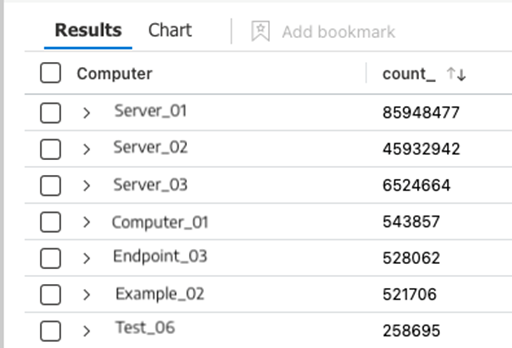Introduction and Use Case:
Continuing from a previous post, today we’ll dissect even more simple but powerful KQL queries that are essential to keep in your threat hunting utility belt.
Recap:
In my last post, we broke down some helpful, basic KQL queries and syntax:
- Defining table to query against
- Defining time periods manually and via GUI
- Filtering out non-billable query results
- Leveraged the Summarize function to manipulate results
- Graphing results to chart
- Querying specific devices
- Querying the Usage table for anomalies
How verbose is an EventID?
SecurityEvent // <--Define the table to query
| where EventID == "4663" // <--Query for specific EventID
| summarize count() by bin(TimeGenerated,1d) // <--Return count per day
| render columnchart // <--Graph a column chart

Which Devices are Throwing a Specific EventID?
SecurityEvent // <--Define the table to query
| where EventID == "4663" // <--Query for specific EventID
| summarize count() by Computer // <--Return count per computer

How often does a specific computer throw a specific EventID over a defined timespan?
SecurityEvent // <--Define the table to query
| where EventID == "4663" // <--Query for specific EventID
| where Computer == "This Guy" // <--Query a specific device
| summarize count() by bin(TimeGenerated,1d) // <--Return count per day
| render columnchart // <--Graph results to chart

Summary:
In this post, we broke down some helpful, basic KQL queries and syntax:
- Defining table to query against
- Querying for specific EventIDs
- Querying specific devices
- Combining these to query for specific EventIDs on specific devices
- Leveraged the Summarize function to manipulate data (break totals up by day etc.)
- Graphing results to chart
Official Microsoft References:
- https://learn.microsoft.com/en-us/azure/data-explorer/kusto/query/
- https://learn.microsoft.com/en-us/azure/data-explorer/kql-quick-reference
- https://learn.microsoft.com/en-us/azure/data-explorer/kusto/query/best-practices
- https://learn.microsoft.com/en-us/azure/data-explorer/kusto/query/tutorials/use-aggregation-functions